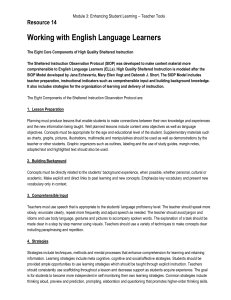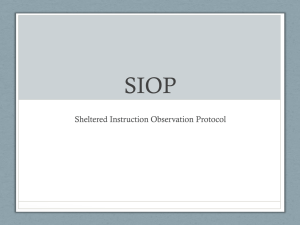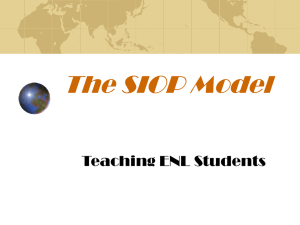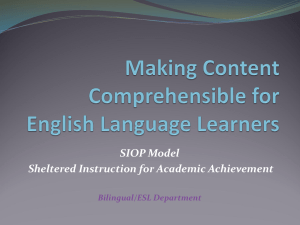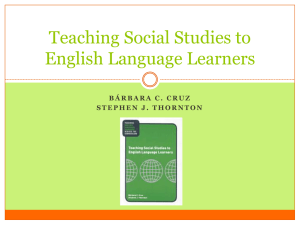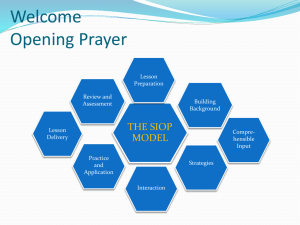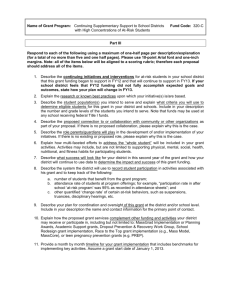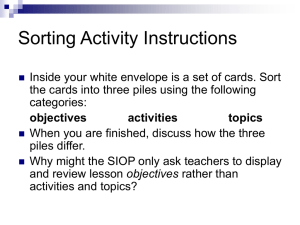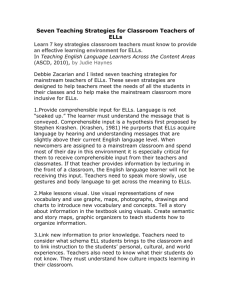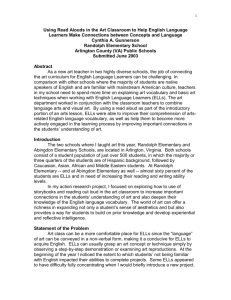Developing Art Lessons with At-Risk Youth and ELLs in
advertisement
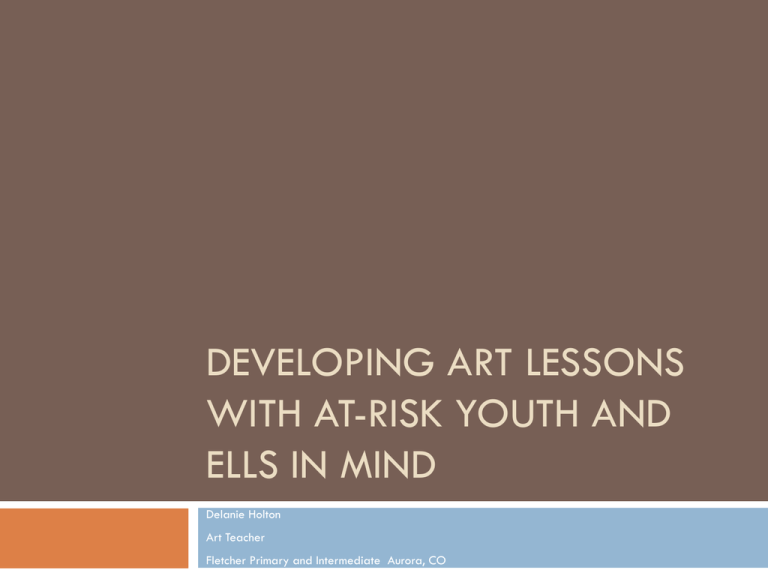
DEVELOPING ART LESSONS WITH AT-RISK YOUTH AND ELLS IN MIND Delanie Holton Art Teacher Fletcher Primary and Intermediate Aurora, CO Why the Arts Matter Students who participate in the arts: Have higher retention rates. Have higher standardized test scores. Demonstrate improved self-concept and self-efficacy. Have improved critical thinking skills, fluency, originality, focused perception, and imagination. Have improved parent relationships, self-concept and overall academic achievement regardless of socioeconomic background. Develop an understanding of visual language. At-Risk Youth At-risk youth are those who lack the cultural capital necessary to achieve in a traditional academic setting. At-risk youth may struggle with: Self-concept Societal pressures Cultural identity SHARE: What are some lessons you have in your tool box that address these struggles? Were your students “hooked”? What Already Works High quality art education is: based on the visual world. about examining culture. hands-on. expressive. standards-based. integrated. English Language Learners (ELLs) English Language Learners Are those whose first language is other than English. Because most ELLs are of minority status background, they may be considered at-risk. School failure increases when staff is ill-equipped to meet the unique needs of ELLs. A study conducted by Spina (2006) indicated that students who participated in an arts program that used appropriate interventions made gains in native language retention and reading scores. Why Shelter Instruction in Art? You’re probably already doing it Focus strategies Increase interest and participation Improve instruction Meet the needs of all students Sheltered Instruction for ELLs Lesson planning with ELLs in mind The Sheltered Instruction Observation Protocol (SIOP) is a model used to organize and implement Sheltered Instruction strategies. Teachers use six strategies: Clearly defined content objectives Clearly defined language objectives Content concepts that are age and background appropriate Extensive use of supplemental materials Differentiation and adaptation of content Meaningful activities that integrate lesson concepts Key Features of SIOP Component Description Preparation •Adaptation of content •Links to background •Links to past learning •Strategies incorporated Scaffolding •Modeling •Guided practice •Independent practice •Comprehensible input Grouping Options •Whole class •Small group •Partners •Independent Integration of Process •Reading •Writing •Speaking •Listening Application •Hands-on •Meaningful •Linked to Objectives •Promotes engagement Assessment •Individual •Group •Written •Oral Writing Content Objectives Clearly define goals of the unit and each lesson. Align to curriculum and Visual Arts standards. Clearly post and review objectives before and during lessons. State orally. Choose objectives with students’ background, abilities and interests in mind. Writing Language Objectives Anticipate basic language needs What are the essential language skills needed? i.e., within reading, writing, listening, and speaking Language Objectives are: Key technical vocabulary and concept words Language skills Grammar or language structure Language learning strategies Predict, preview text, hypothesize Tasks Give explicit and ample opportunity for practice Read, take notes, explain a procedure Language functions Define, classify, compare, explain Sample Language Objectives In pairs, read and discuss a paragraph. Correctly spell 5 new concept words in writing. Identify and name the 7 elements of art. Student will discuss the artwork of Frida Kahlo in small groups, make predictions… Students will listen to critique instructions and comment on their partner’s artwork. Students will pronounce vocabulary words correctly. DETERMINE THE TASK and ask yourself what language skills are needed for the task. BE EXPLICIT! DETERMINE THE SEQUENCE of Language Objectives Use at least one SPEAKING Language Objective Comprehensible Input and Affective Filter Stephen Krashen Input hypothesis Language acquisition occurs in increments IMAGINE you are isolated in a room and all you can hear for years is the sounds of a German radio station, would you ever learn to speak German listening to that radio station? i+1 (input + one new piece of information) Language is presented as one “step” beyond what the language learners already know Affective filter Language acquisition is affected by variables including: self-image motivation anxiety level Making Instruction Comprehensible Build on student’s prior knowledge. What do they already know? What do they need to know? Move from concrete to advanced. Use new vocabulary in context. Use pictures, props, demonstrations, and hands-on activities. Talk about what you’re showing. Simplify speech. Structure written text carefully. As art educators, we are good at demonstrating and using realia. Take a moment to REFLECT on lessons that have been most successful. What got kids “hooked”? Did they “get it”? Did you use any of the SIOP strategies without knowing it? Were the kids doing more than you were talking? Meaningful Activities Content objectives are integrated Ample practice time for new vocabulary Activities support content and language objectives Activities are linked to student interest and prior knowledge BRAINSTORM: •How do you link art making to concept development? Is it explicit? Differentiation and Adaptation Adaptation is not about lowering expectations! Differentiation and adaptation is meeting the unique needs of all students in meaningful ways. Adapt texts by: Scaffold instruction: high-lighting important vocabulary. using comprehensible texts linked to visual cues. Help the learner get there a bit at a time EXAMPLE: You demonstrate first, the class explains the steps, the student produces independently. Differentiate with high-quality, higher-order production in mind. Plan ahead. Lesson Plan Template
